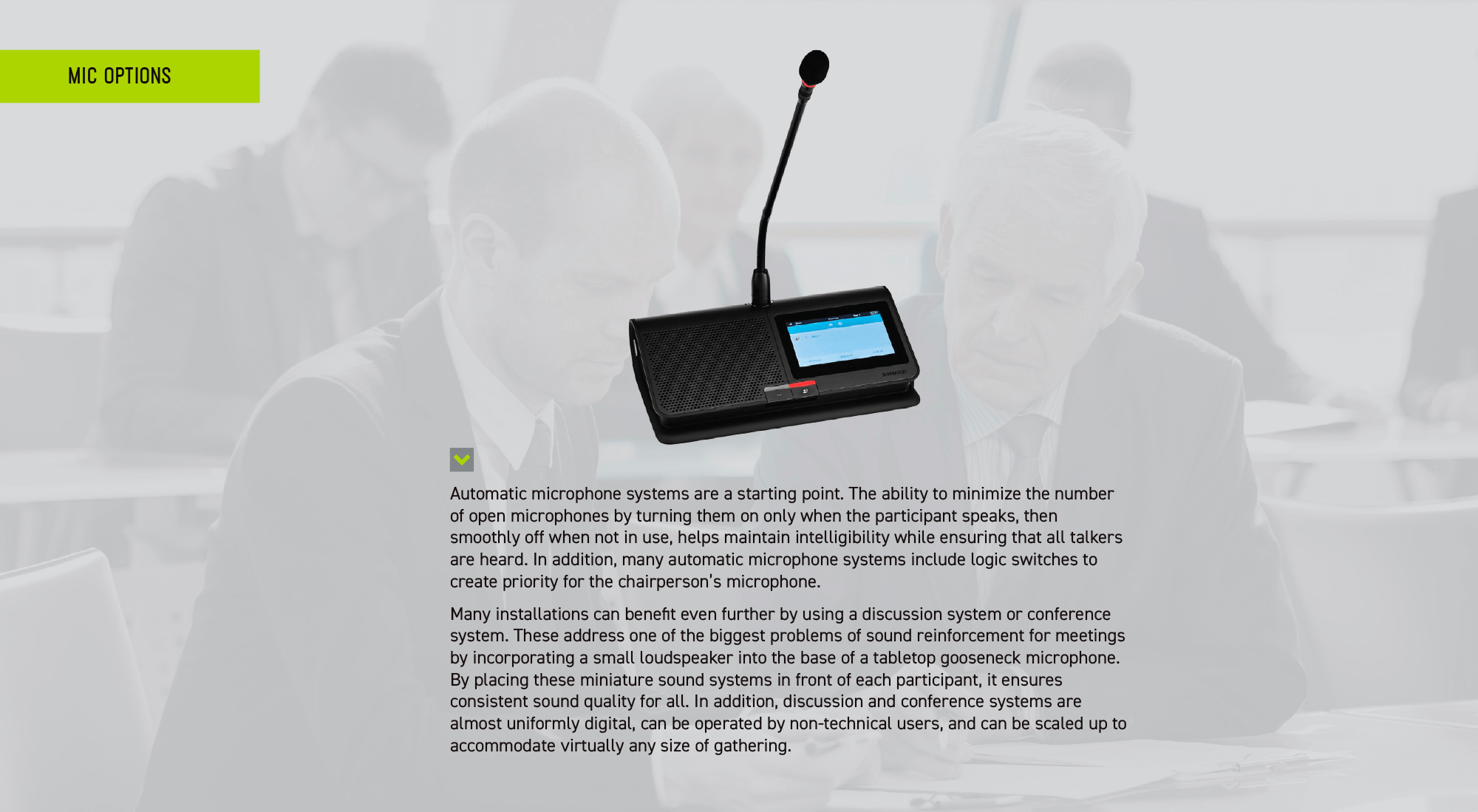

Room Types and Miking Rooms
The optimal audio solutions for any given meeting space depends on a wide range of factors, including the size of the room, the number of people involved, the number of presenters, and the style of presentation.
The biggest factor in microphone selection is whether or not a sound reinforcement system that enhances and distributes sound throughout a room – is involved. Another major consideration is presentation style. Example include:
- One-to-many: one person addressing an audience, such as a lecture
- Many-to-many: all attendees speaking at will, as an open forum
- Hybrids: special cases of many-to-many communication with restricted or prioritized microphone access.
Examples include city councils, courtrooms, boardrooms, and panel discussions with an audience.

Huddle Room
These small, informal meeting spaces have become increasingly popular in recent years. In general, there is no need for sound reinforcement in basic meeting spaces. However, many huddle rooms do incorporate audio or video conferencing, which may be a permanently installed or portable system.
Because there is no PA system involved this is a perfect situation for an area miking approach, with one or two mics overhead.
The key issue to be aware of is to avoid placing the mic too close to the loudspeaker from the teleconferencing system.

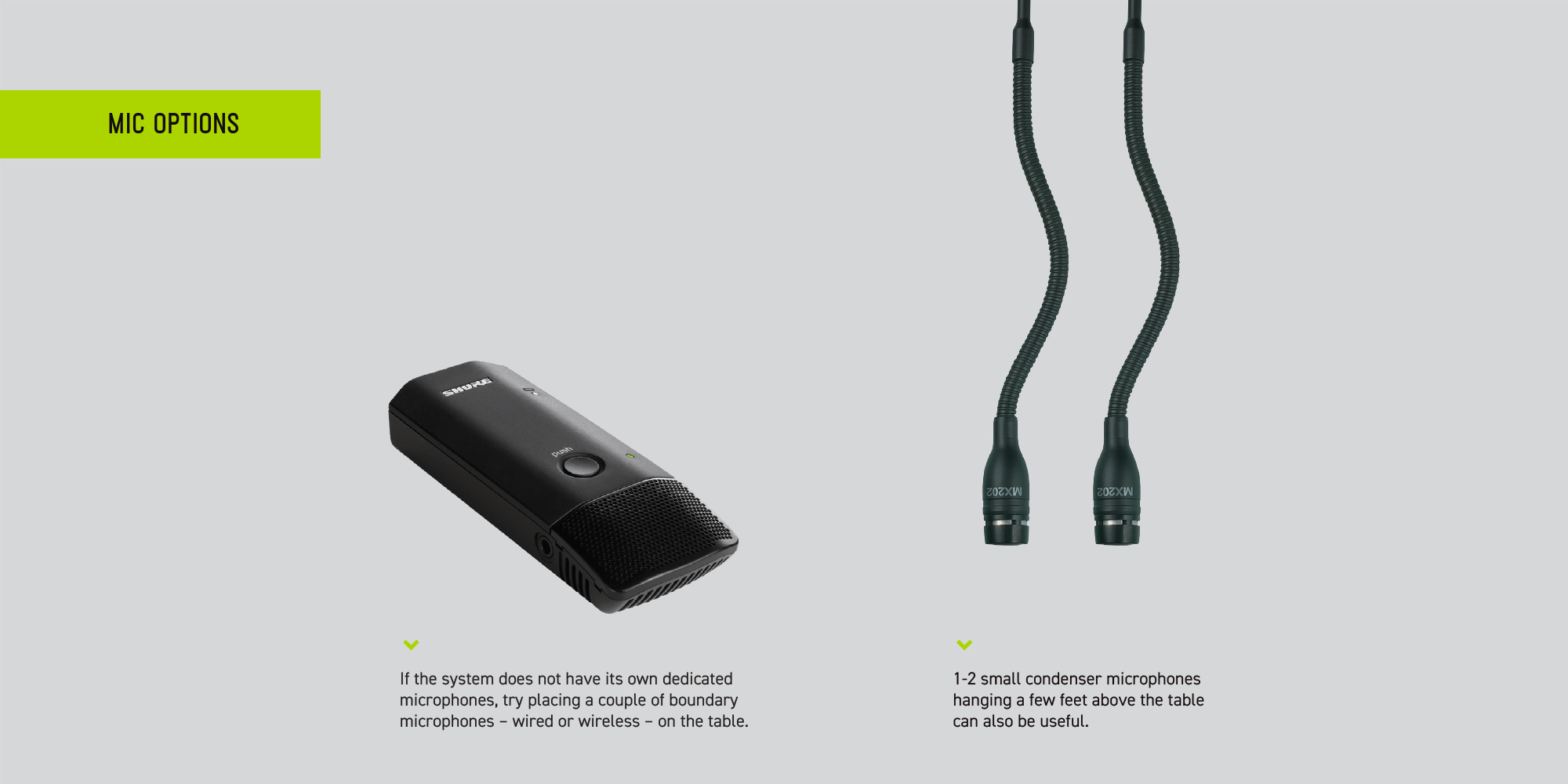

Meeting Room
These larger spaces typically accommodate between 6 and 30 people at one or more large tables, often seated “in the round” so that everyone can see each other.
If the room has well-controlled acoustics, sound reinforcement may not be required. However, both recording and teleconferencing are common in meeting rooms, which means that microphones will be necessary.
Whenever four or more microphone is used, it is strongly recommended that there be some way of turning off unused microphones. The easiest way is to use microphones with integral on/off switches are rely on the presenters to operate their own microphones.
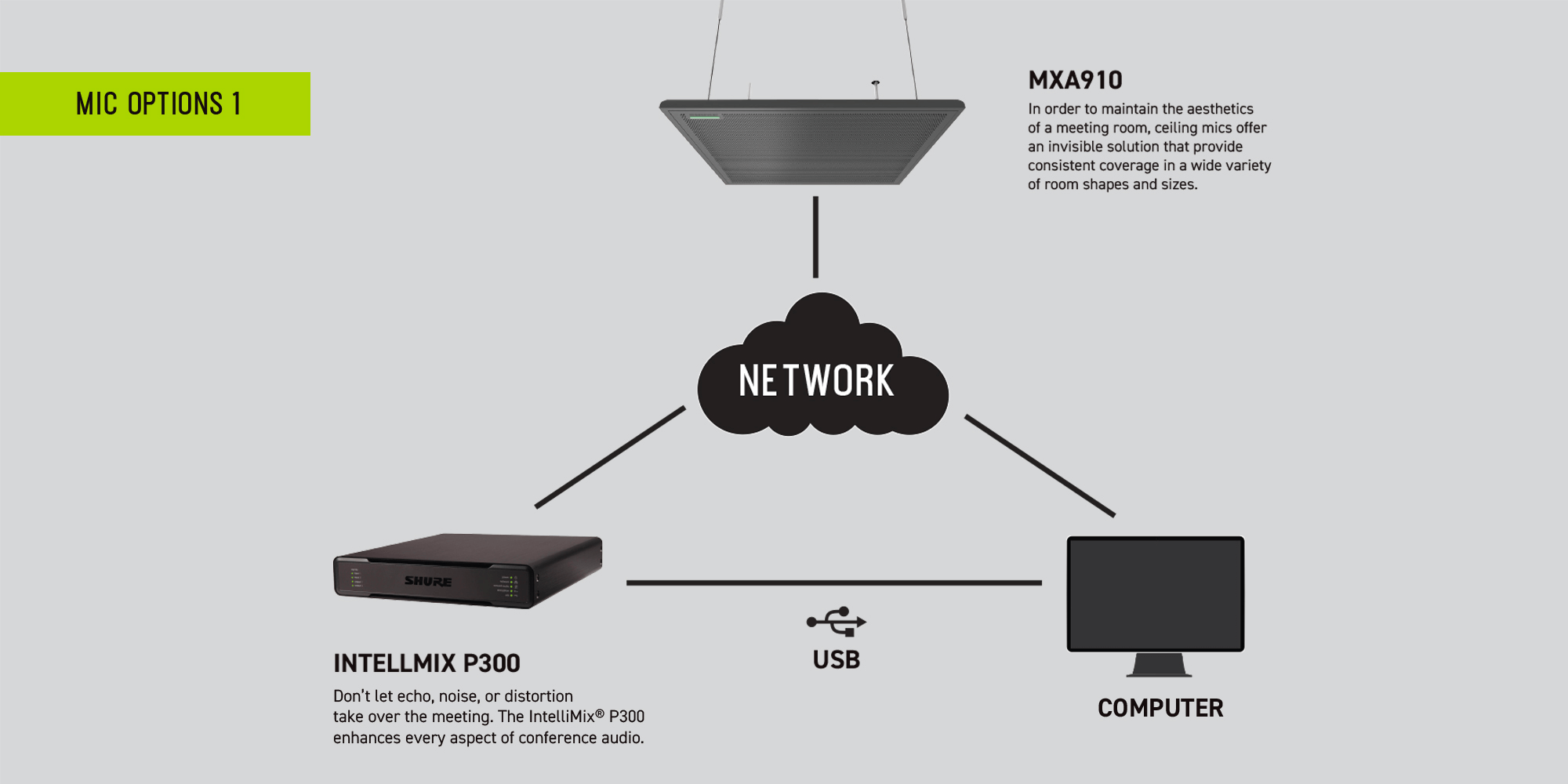
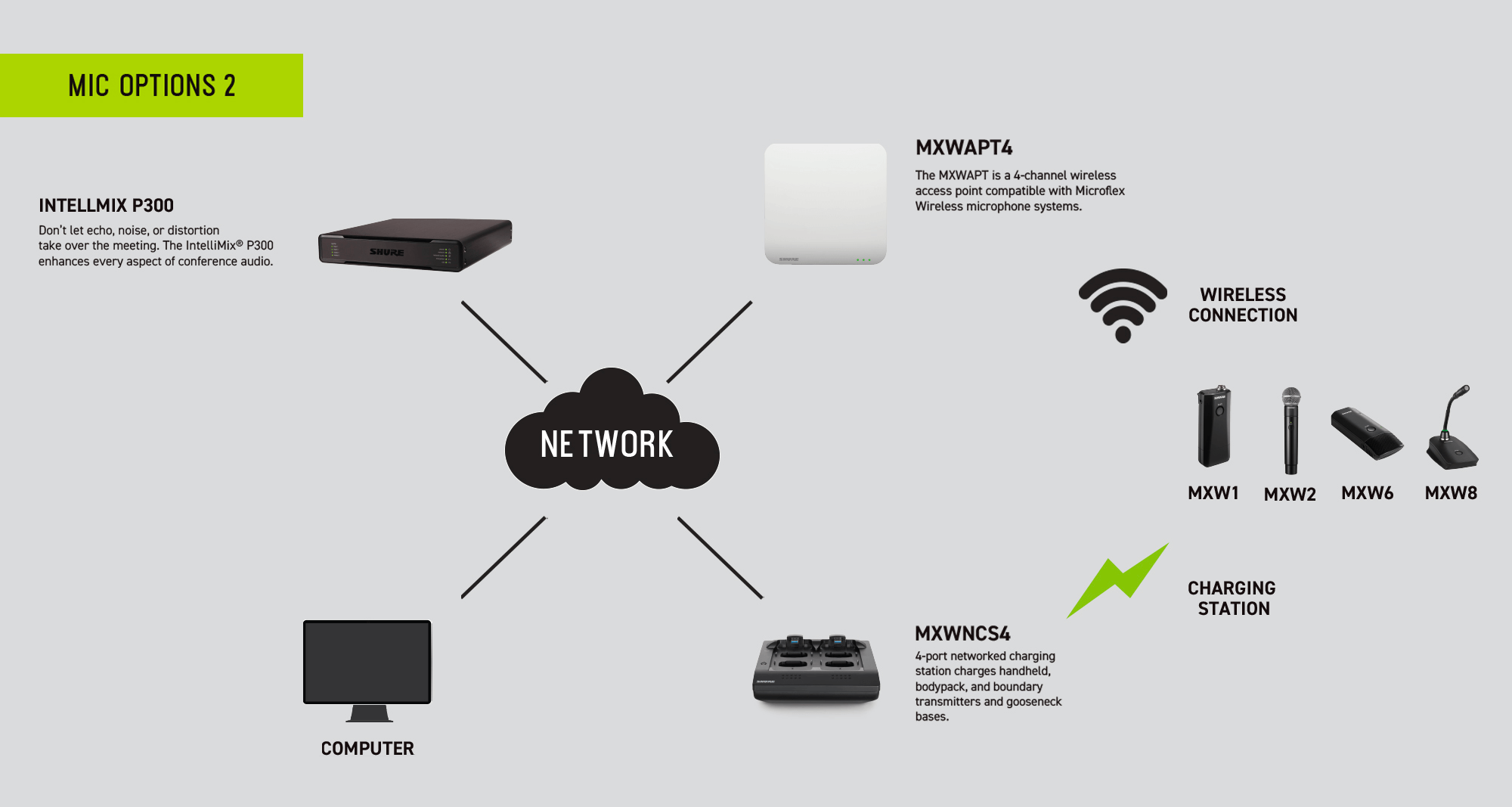
Training Room
This is a classic one-to-many communication scenario, with up to 30 students at chairs or tables facing the instructor.
The larger and more reverberant the room, the more need there is for a sound reinforcement system at the front, facing the learners. Smaller rooms that do no require a sound system may still need miking to feed streaming, videoconferencing, and/or recording of the presentation. Ensuring clarity of speech is critical in any learning environment.

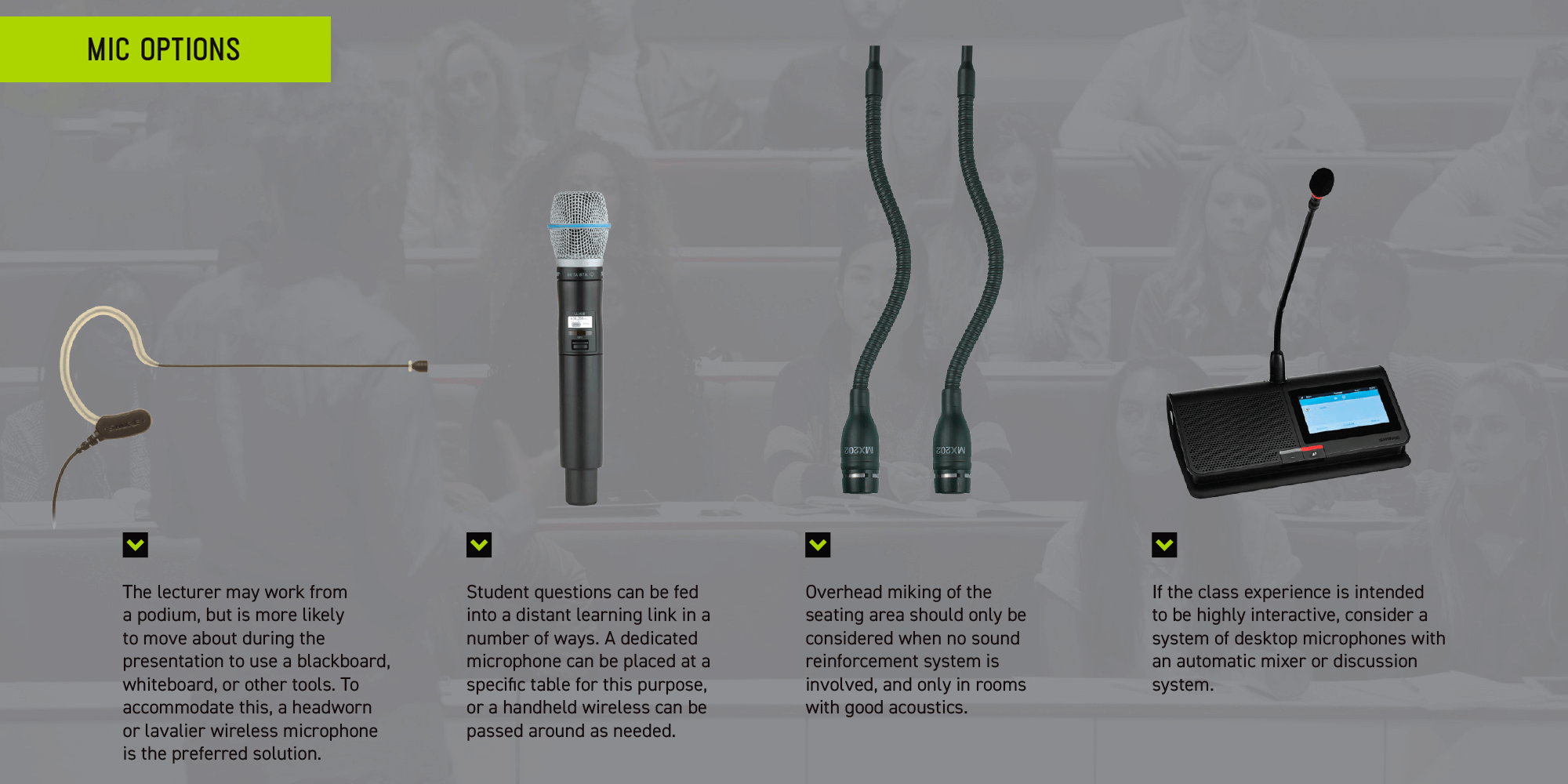

Video Conferencing
Videoconferencing systems allow multiple groups of people to interact in real-time. There are two primary types of systems: dedicated and desktop, and they can be based on either traditional telephony or an enterprise VoIP system.
The audio part of a videoconferencing system follows the function of any typical meeting room, often with pre-selected speaker systems and microphones.
As with any sound system, care must be taken to maximize intelligibility and minimize unwanted noise. When setting up a teleconference, use solid techniques for microphone selection and placement. Wireless microphones can be incorporated to eliminate unsightly cables while adding mobility.
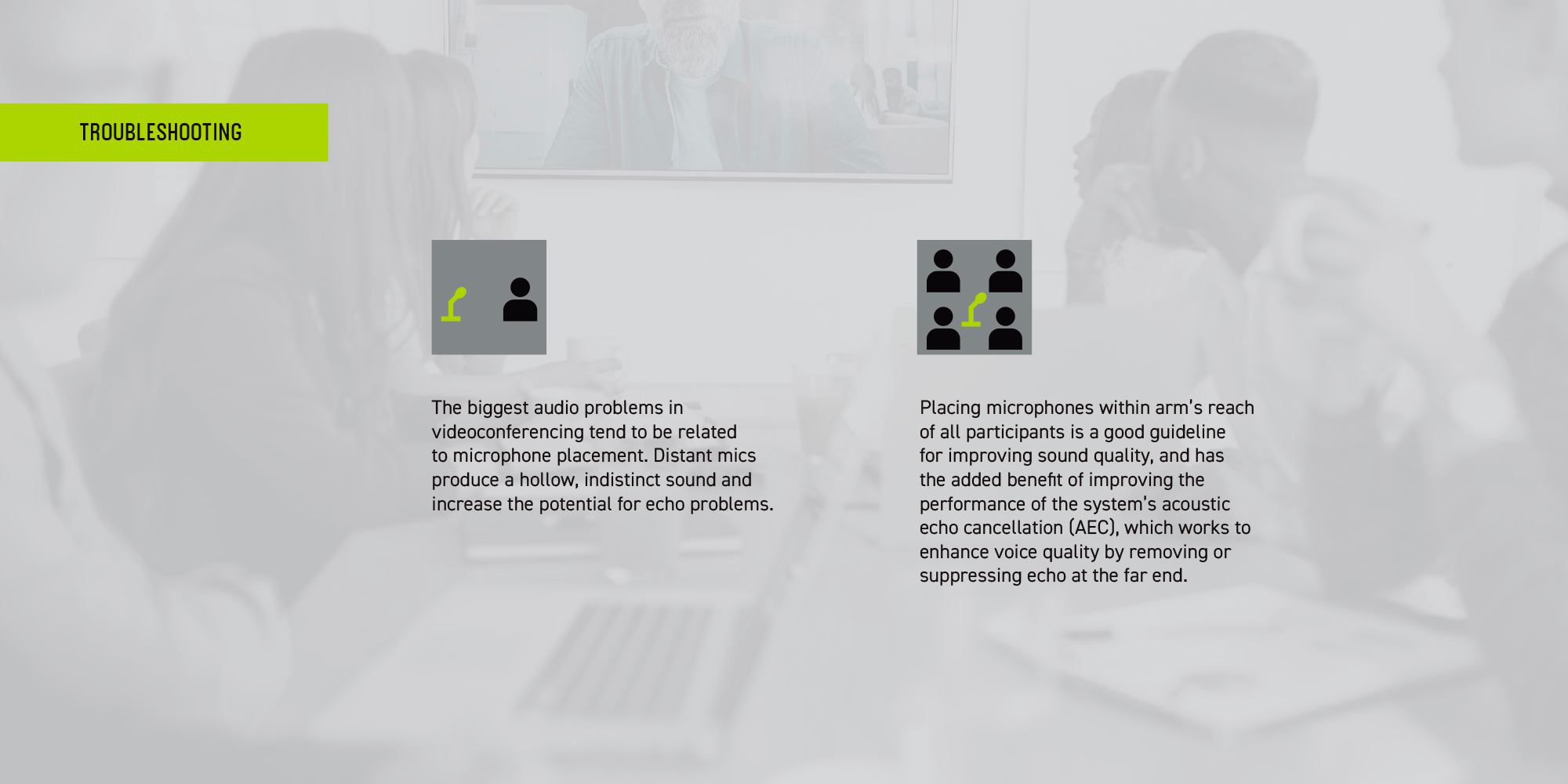
Boardroom
A boardroom is not unlike a standard meeting room, but incorporate turnkey control systems to enable participants to focus on the proceedings rather than the equipment.
Typically, a control system will allow users to access any equipment through a single touchscreen. Any sound reinforcement is usually limited to videoconferencing systems and playback systems for video.
Microphones are common in boardrooms, both for teleconferencing and as a means of recording the proceeding for archival purposes. Automatic microphone systems are popular, as they ensure full capture of the proceedings without the need for a system operator in the room.

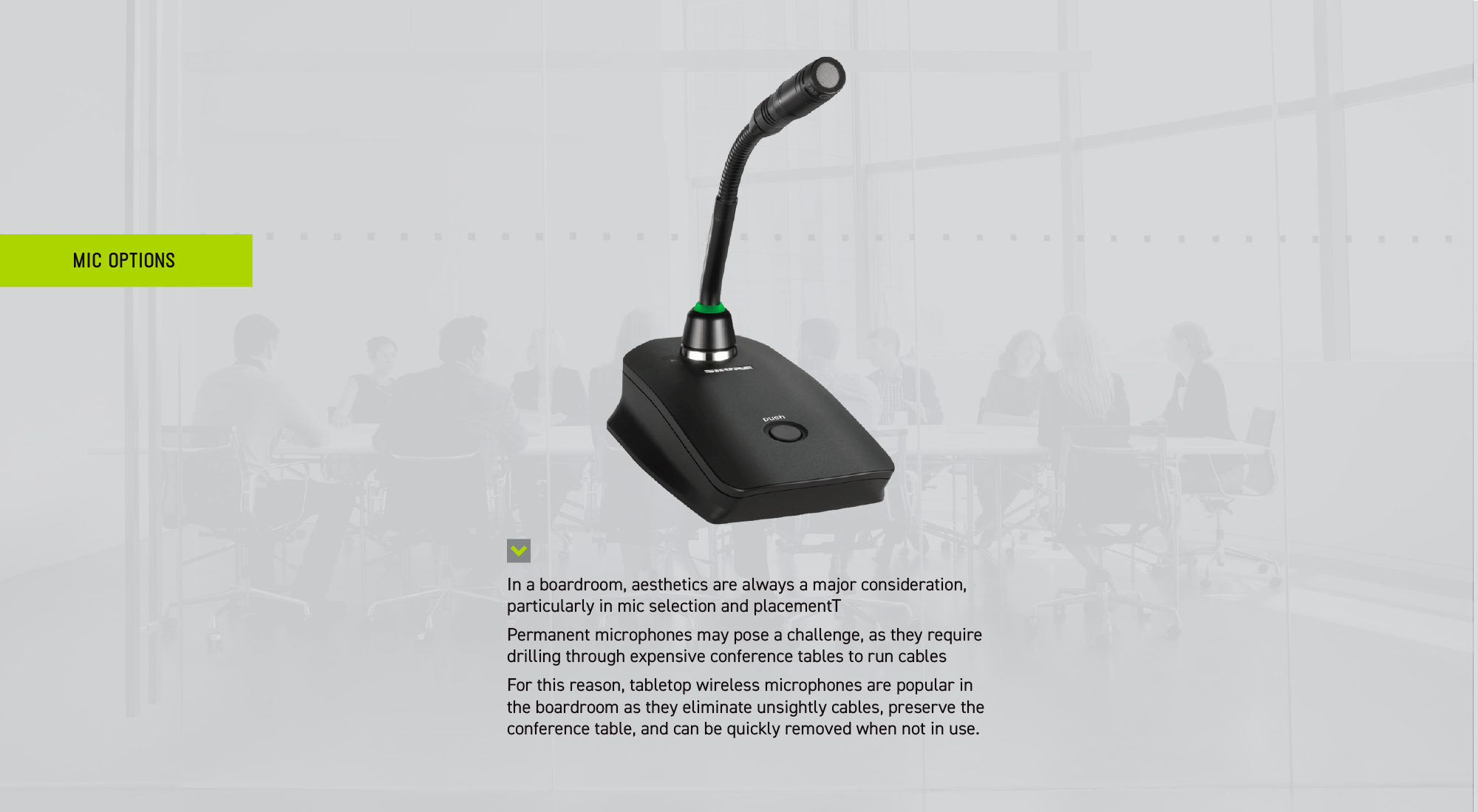

City Council/Courtroom Large Meeting Facilities
The bigger the meeting facility, the greater the need for advanced systems.
With a chairman presiding over a large group like a city council, usually with an audience gallery, a comprehensive sound system with advanced features is required. International conferences are even more demanding, with interpretation capabilities often needed.
Such facilities have complex requirements, including the need for participants to hear each other across the room, for the audience or gallery to hear everything, and of course the need to maintain some semblance of order with so many participants. Sound systems must be carefully designed, with multiple destinations including monitoring for the participants, a PA system for the audience, and a separate feed for recording, for the press, for cable broadcast and streaming, etc.
